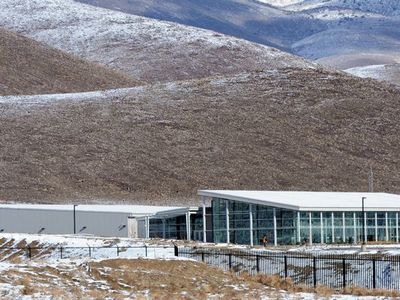Apple is planning a massive expansion of its data center in Reno, Nevada, according to information shared today by Reno-Gazette Journal reporter Anjeanette Damon who covered a Reno City Council meeting Apple attended to discuss the project.
Apple will invest $1 billion in expanding its current data center at the Reno Technology Park, nearly doubling the size of the original project.

Hints of Apple's plans for a major expansion of its data center first surfaced in February, when building permits surfaced for a new 373,893-square foot data center with a build out of eight clusters plus an administration building, garage, and generator yard. It's likely that project, dubbed "Project Isabel," is the expansion being discussed today.
Apple's first Reno data center, "Project Mills," was approved in 2012, with construction at the site beginning soon after. Since then, Apple has been expanding at the site. Along with building permits for "Project Isabel," Apple in 2016 also applied for building permits for "Project Huckleberry," an addition of several new data center clusters to be built adjacent to Project Mills.
Apple is also seeking to start construction on a $4 million shipping and receiving facility in downtown Reno, with today's city council meeting also covering those prospective plans.
Apple and the Reno City Council are currently sorting through tax and zoning issues as Apple aims to purchase land for the downtown project. We'll update this post when the council comes to a decision.
Update: The Reno City Council has approved Apple's plans to build a warehouse in downtown Reno.
























Top Rated Comments
I used CentOS (the free unsupported version of RHEL) locally for development in a VM sometimes, otherwise used OS X's UNIXy core. Apple has a TON of internal-only software for all kinds of tasks and uses a lot of open-source, commercial and in-house developed stuff to run the company. Like any other modern company would these days.
If you needed an internal development server you went to a web tool and configured the OS (type, version)/specs you needed and spun one up. Where the VM was physically running you would never know.
A lot of people had PC laptops and used Android phones in the department. There was no hard requirement to use only Apple products, and we in fact targeted Chrome mostly for the web app since Safari couldn't cut it (at the time). I used a big DELL monitor for a second display on my MacBook Pro.
Apple is a massive company with MANY departments all with their own requirements and support. There is probably every server OS currently en-vogue in use across the ENTIRE company to run everything Apple does.